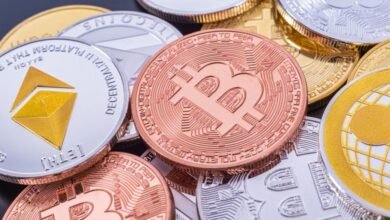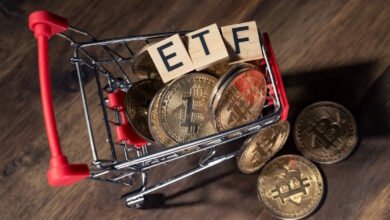
Play-to-Earn System. Having access to various gaming devices was a perk of being a youngster. There has been a gaming industry for quite some time. All of us, regardless of age or gender, have had a blast with it recently. From the humble beginnings of Nintendo and controller pads, games have come a long way. Thanks to technology’s never-ending development, this entertaining hobby is practically lifelike. The blockchain has already enhanced the underlying economy and the overall gaming experience. Forecasts indicate that the worldwide play-to-earn games industry will grow from its 2022 valuation of $32.9 billion to $88.6 billion by 2028, a compound annual growth rate (CAGR) of 17.93%.
The industry has steadily abandoned the old model, in which players had to buy in-game currency to acquire any advantage. Thanks to this concept, game projects could count on user money to fund their development. Due to the popularity of P2E games, this is currently taking a back seat. These games use blockchain technology to compensate players based on their effort, talent, and time invested. Providing different ways to earn rewards, P2E games are altering the future of gaming, and we’ll talk about them in this article.
Play-to-Earn Gaming
In the fourth quarter of 2023, the average daily count of Unique Active Wallets (UAW) for blockchain gaming platforms was 1.1 million. This highlights the ever-increasing popularity of blockchain games. In most cases, your skill level determines how far you go in the P2E environment. P2E games are skill-based and aim to reward players for strategic thinking and mastery of the game’s mechanics, as opposed to the traditional models of gaming that reward repetitive behaviors. You can earn impressive rewards if you’re good in player-versus-player (PvP) battles, complex in-game challenges that demand strategic decision-making, efficient resource management in the game economy, and working well with teammates in cooperative game models.
Many point-and-click games have ditched elements like loot boxes and random character draws because of how much luck they rely on. To make skill development and strategic thinking more critical to a player’s performance and earnings, these games aim to de-emphasize luck and de-emphasis.
Having a solid grasp of the game’s mechanics is another trait that will increase your earnings in this area. Understanding the character’s abilities and limitations and becoming proficient in various techniques are vital assets. Players who put in the time and effort to perfect these abilities gain a considerable advantage. Strategy games, eSports, trading card games, and other similar genres are examples of player-versus-environment games that rely on ability. It must be stressed that not every P2E game depends only on skill. Chance is still a part of many of them.
Powering Your P2E Strategy With Data
Optimal resource management, strategic thinking, competitive fight prowess, ability to overcome challenging tasks, and knowledge of the game mechanics are the characteristics of a good player in Path of Exile. An emphasis on knowledge and experience takes the place of a reliance on luck. Although these are all fantastic, data is essential to incorporate into your blockchain gaming adventure.
Platforms like UpOnly provide insights into various P2E games, and data enhances your P2E strategy. For P2E transactions, UpOnly is the equivalent of CoinMarketCap or CoinGecko. A bird’s-eye view of the P2E industry is provided to users. Regarding P2E games, UpOnly has you covered with detailed and current statistics on things like token pricing, in-game asset values, and player activity, among other things. Spectators can turn the data they contribute into real wealth by betting on the results of play-to-earn games on the platform’s decentralized infrastructure.
By decentralizing established platforms such as these, one can discover popular in-game assets, assess the worth of NFTs, and monitor opportunities such as scholarship programs, all while reducing risks and increasing returns. You may get a significant advantage in the P2E field by analyzing the data and market moves, new P2E games, and token price swings. You will have the best chance of achieving optimal P2E performance when you use data in conjunction with research and your expertise.
Bridging the Gaming Gap
The blockchain gaming world might be daunting for some, particularly beginners used to more conventional gaming experiences. Projects such as Astra Nova, Outlanders, and Sidus Heroes are crucial. Outlanders combines classic and Web3 gaming with blockchain technology, making it a multiplayer online role-playing game (MMORPG). The game’s excellent user interfaces and experience welcome seasoned gamers and newcomers into the Bitcoin world.
As for Sidus Heroes, it’s a point-to-point MMORPG set in the future that focuses on NFTs. Introducing NFTs to grant players ownership of in-game content creates a player-driven economy encased in a blockchain experience ripe with prospects. Playing these games is like taking part in an immersive Web3 universe, where you can build your character practically and experience the full MMORPG action, all while enjoying the benefits of the P2E model. This model might significantly increase the number of users onboarded through gaming, speeding up mainstream acceptance.
Astra Nova is an innovative free-to-play Web3 role-playing game that transports players to a fantastical universe steeped in galactic mythology. Fortnite, Final Fantasy 14, and other old games inspired the game. Astra Nova continues a trend in which players gain control from established game developers, similar to the Outlanders and Sidus Heroes.
Similar to how QORPO is revolutionizing eSpor, these games are transforming massively multiplayer online role-playing games. At the sweet spot where blockchain technology meets the world of electronic sports, QORPO is on a mission to level the playing field for everybody. The company’s technology powers Citizen Conflict, a hero shooter that combines fast-paced gameplay with eSports intensity for the ultimate in competitive action.
Also Read: Methods for Generating Interest from Cryptocurrencies
The Future of P2E
By 2025, the worldwide market for video games is predicted to have grown to $206.4 billion. That is why the market has a tremendous chance in blockchain technology. You can see the possibilities of P2E gaming in the initiatives I’ve mentioned in this essay. Still, there are obstacles.
One problem is that it can’t scale. The poor user experience directly results from the sluggish transactions and hefty costs caused by this problem. Take Ethereum as an example; it typically handles about fifteen TPS. This is a relatively low figure for a decentralized application in the gaming industry.
Polygon, a blockchain that uses layer-2 scaling, is resolving this issue. In addition to being compatible with the Ethereum ecosystem, the network provides quicker transaction rates (up to 7,000 TPS). There are competing layer-2 solutions, so things should keep looking up from here. The safety of in-game assets is another concern. Maintaining this focus is critical for the long run.
P2E gaming will undoubtedly have a bright future despite these challenges. Thanks to the ongoing evolution of the blockchain business and technology, there will be a proliferation of creative games and a more robust P2E ecosystem as P2E platforms overcome the obstacles they are already facing.








